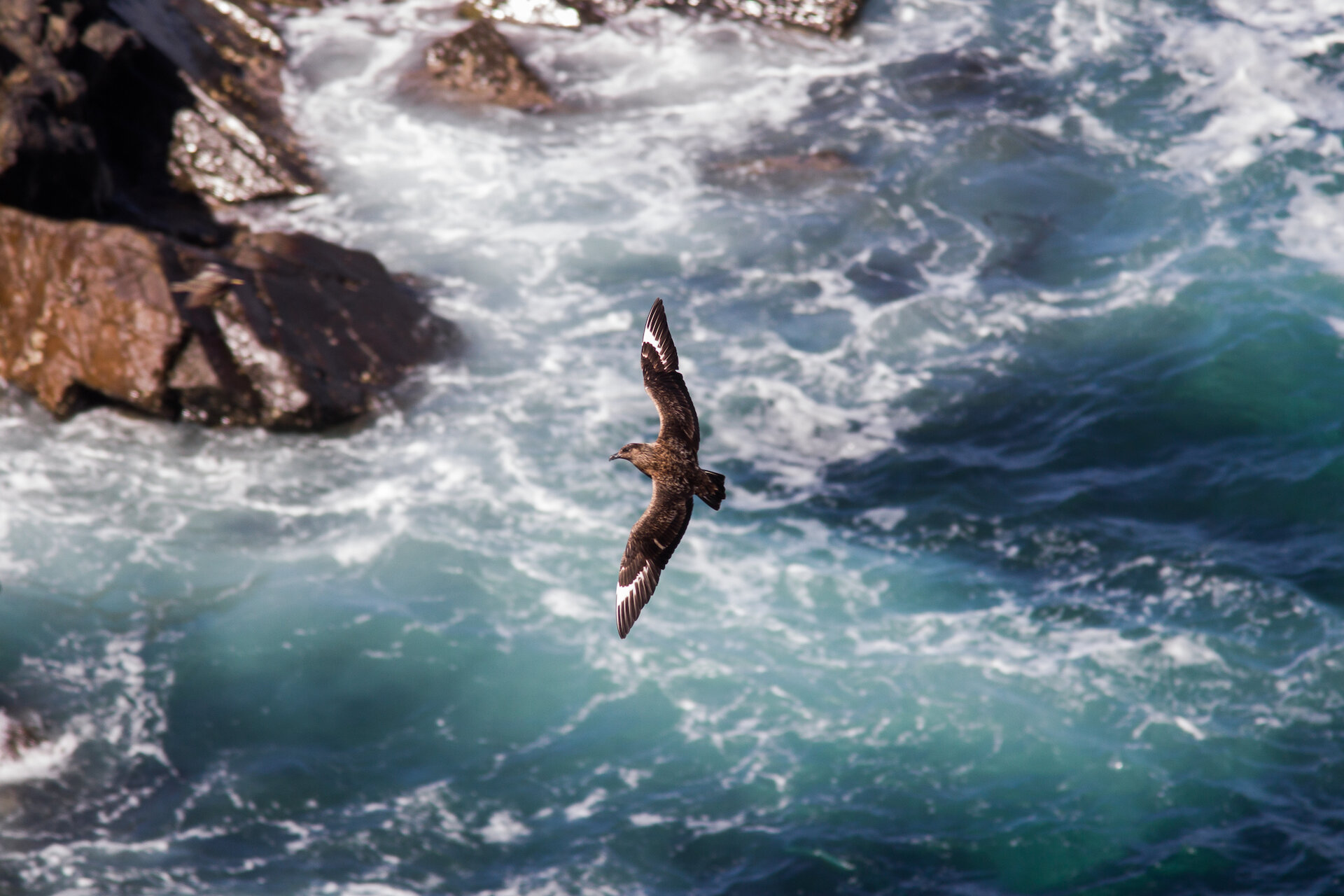Hermaness National Nature Reserve includes the dramatic precipices of the Muckle Flugga stacks off the northern tip of Unst. It has even more gannets than Noss and is one of the best places to see the piratical, but smaller, Bonxies attacking them and stealing their food. The puffins on Hermaness and the neighbouring headland of Saxa Vord probably number over 23,000 and are astonishingly tame.
As at Noss, the reserve is privately owned but managed by Nature Scot, and guided walks may be arranged on request. See the website for more details.
Fetlar
Another prime bird watching location is the RSPB reserve on the island of Fetlar. The island boasts fine views of birds such as skuas and terns but is famous as the summer home of one of Britain's rarest breeding birds – the red-necked phalarope. Fetlar accounts for 90% of the UK population of these remarkably tame birds. In June and July, they can be seen at close quarters from an RSPB hide in the Mires of Funzie, or on the nearby Loch of Funzie.
Another rare bird, the Whimbrel, also nests in Fetlar. Around 80 pairs breed on the island, which is 15% of the UK breeding population. In the past, Fetlar has even had the UK's only pair of breeding snowy owls.
Fair Isle
Since the founding of the Fair Isle Bird Observatory in 1948, the amount of scientific ornithology carried out in Shetland has vastly increased. As well as Fair Isle's pioneering studies on bird migration, the island has become an open-air laboratory for a great deal of research into the breeding ecology of seabirds.
The island is home to the rare Fair Isle Wren, a subspecies of the Shetland wren and the least numerous endemic bird subspecies in Britain and perhaps also in Europe.
The Observatory sadly burned down in spring 2019 but plans are underway to build a new one. In the meantime, visit the Fair Isle Bird Observatory website to see a comprehensive birding calendar for the island and further visitor information.


